 Rayonier and PotlatchDeltic have agreed to merge, leveraging their lumber, timberland and real estate enterprises. In other Business news: Trump’s lumber tariffs take effect today; FPAC says urgent action is required; US homebuilders say the tariffs will hike costs; the US Lumber Coalition says that’s not so; and lumber futures rise. Meanwhile: Washington state invests in timber jobs; US tariffs reshape containerboard trade; Boise Cascade faces headwinds; and Lowes completes acquisition.
Rayonier and PotlatchDeltic have agreed to merge, leveraging their lumber, timberland and real estate enterprises. In other Business news: Trump’s lumber tariffs take effect today; FPAC says urgent action is required; US homebuilders say the tariffs will hike costs; the US Lumber Coalition says that’s not so; and lumber futures rise. Meanwhile: Washington state invests in timber jobs; US tariffs reshape containerboard trade; Boise Cascade faces headwinds; and Lowes completes acquisition.
In Forestry/Wildfire news: Canadians debate the need for a national wildfire agency; fire experts speak out at the Wildfire Resilience Consortium of Canada conference; Manitoba considers a more active role to curb fires; and the US West report less land burned this year. Meanwhile: logging in Oregon’s national forests continues despite government shutdown; a new report says global forests are still in crisis due to farms and fire; and more pushback on the EU Deforestation delay.
Finally, former premier Pat Binns and his wife are PEI’s woodlot owners of the year.
Kelly McCloskey, Tree Frog News Editor

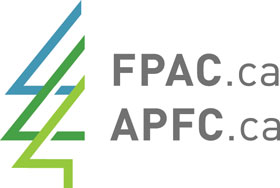 The Forest Products Association of Canada (FPAC) is extremely frustrated and deeply concerned by the U.S. government’s decision to impose Section 232 tariffs on Canadian softwood lumber and derivative products. These unjustified measures, which take effect today, threaten the livelihoods of more than 200,000 Canadians and the stability of hundreds of towns and cities that rely on a strong forest sector. “For eight years, forest workers and communities across Canada have borne the brunt of increasing duties—now exceeding 45 percent with the addition of these new tariffs,” said Derek Nighbor, President and CEO of FPAC. “These are punitive, protectionist measures with no basis in fact. They ignore decades of evidence that Canadian lumber strengthens, rather than threatens, U.S. national security and economic resilience.” Targeting responsibly managed, sustainably sourced Canadian wood products under the pretense of national security is both unjustified and deeply damaging. These actions undermine one of the most integrated, mutually beneficial trade relationships in the world, increasing costs for American families and homebuilders while jeopardising Canadian mills and workers.
The Forest Products Association of Canada (FPAC) is extremely frustrated and deeply concerned by the U.S. government’s decision to impose Section 232 tariffs on Canadian softwood lumber and derivative products. These unjustified measures, which take effect today, threaten the livelihoods of more than 200,000 Canadians and the stability of hundreds of towns and cities that rely on a strong forest sector. “For eight years, forest workers and communities across Canada have borne the brunt of increasing duties—now exceeding 45 percent with the addition of these new tariffs,” said Derek Nighbor, President and CEO of FPAC. “These are punitive, protectionist measures with no basis in fact. They ignore decades of evidence that Canadian lumber strengthens, rather than threatens, U.S. national security and economic resilience.” Targeting responsibly managed, sustainably sourced Canadian wood products under the pretense of national security is both unjustified and deeply damaging. These actions undermine one of the most integrated, mutually beneficial trade relationships in the world, increasing costs for American families and homebuilders while jeopardising Canadian mills and workers.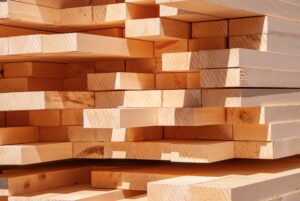 The US is now collecting tariffs on imported timber, lumber, kitchen cabinets, bathroom vanities and upholstered furniture, duties that threaten to raise the cost of renovations and deter new home purchases. …Trump described his wood and furniture tariffs as helping to “strengthen supply chains… and increase domestic capacity utilization for wood products.” Yet
The US is now collecting tariffs on imported timber, lumber, kitchen cabinets, bathroom vanities and upholstered furniture, duties that threaten to raise the cost of renovations and deter new home purchases. …Trump described his wood and furniture tariffs as helping to “strengthen supply chains… and increase domestic capacity utilization for wood products.” Yet 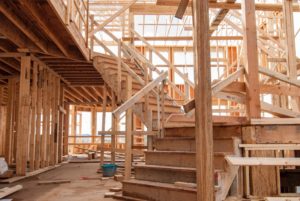 President Trump ushered in new tariffs on imported furniture, kitchen cabinets and lumber on Tuesday, adding a fresh round of levies as he once again threatened to expand his trade war with China. Tariffs ranging from 10% to 50% on foreign wood products and furniture snapped into effect just after midnight. The tariffs are meant to encourage more domestic logging and furniture manufacturing. But critics say that the levies will raise prices for American consumers and could slow industries including home building that rely on materials from abroad. …Critics have called it a stretch to issue the furniture and lumber tariffs under the national-security-related law. …Some American manufacturers lobbied for the tariffs. …Some economists expect the higher price of lumber, along with home furnishings, will slow the pace of home building. That could set back the Trump administration’s goals of improving a weak housing market. [to assess the full story a NY Times subscription is required]
President Trump ushered in new tariffs on imported furniture, kitchen cabinets and lumber on Tuesday, adding a fresh round of levies as he once again threatened to expand his trade war with China. Tariffs ranging from 10% to 50% on foreign wood products and furniture snapped into effect just after midnight. The tariffs are meant to encourage more domestic logging and furniture manufacturing. But critics say that the levies will raise prices for American consumers and could slow industries including home building that rely on materials from abroad. …Critics have called it a stretch to issue the furniture and lumber tariffs under the national-security-related law. …Some American manufacturers lobbied for the tariffs. …Some economists expect the higher price of lumber, along with home furnishings, will slow the pace of home building. That could set back the Trump administration’s goals of improving a weak housing market. [to assess the full story a NY Times subscription is required]


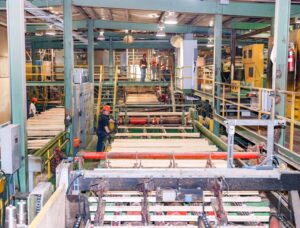 OLYMPIA, Washington — Washington state is investing $700,000 to support its apple and timber industries, creating at least 270 new jobs, Governor Bob Ferguson announced Thursday. The funding comes from the state’s Economic Development Strategic Reserve Fund, which uses unclaimed lottery prize money to help attract and retain jobs. The money will be split across three projects: Yakima County: $250,000 to prepare a site in Sunnyside for a new apple products processing plant. Forks: $200,000 for infrastructure upgrades at the Forks Industrial Park, where Riverside Forest Products USA plans a sawmill. Spokane Valley: $250,000 to expand a manufacturing facility for Mercer Mass Timber. Governor Ferguson said the investments, combined with private funding, will strengthen the state’s economy. Commerce Director Joe Nguyễn added the funds will help meet infrastructure needs, support local businesses, and create sustainable jobs.
OLYMPIA, Washington — Washington state is investing $700,000 to support its apple and timber industries, creating at least 270 new jobs, Governor Bob Ferguson announced Thursday. The funding comes from the state’s Economic Development Strategic Reserve Fund, which uses unclaimed lottery prize money to help attract and retain jobs. The money will be split across three projects: Yakima County: $250,000 to prepare a site in Sunnyside for a new apple products processing plant. Forks: $200,000 for infrastructure upgrades at the Forks Industrial Park, where Riverside Forest Products USA plans a sawmill. Spokane Valley: $250,000 to expand a manufacturing facility for Mercer Mass Timber. Governor Ferguson said the investments, combined with private funding, will strengthen the state’s economy. Commerce Director Joe Nguyễn added the funds will help meet infrastructure needs, support local businesses, and create sustainable jobs.
 Lumber futures rose past $610 per thousand board feet in mid-October, approaching monthly highs as markets priced in tighter near-term supply and looming trade restrictions. Under newly announced US Section 232 tariffs that take effect on October 14th, imported softwood lumber will face a 10% duty and finished wood goods such as cabinets and furniture will face higher levies, prompting importers to front-load purchases and draw down inventories. Domestic output is also constrained as sawmills run cautiously after years of underinvestment, logging curbs in sensitive regions and slow capacity restarts have limited production. The cost and delay of switching suppliers is material given that Canadian lumber, which supplies much of US demand, already carries elevated antidumping and countervailing duties, intensifying the supply squeeze.
Lumber futures rose past $610 per thousand board feet in mid-October, approaching monthly highs as markets priced in tighter near-term supply and looming trade restrictions. Under newly announced US Section 232 tariffs that take effect on October 14th, imported softwood lumber will face a 10% duty and finished wood goods such as cabinets and furniture will face higher levies, prompting importers to front-load purchases and draw down inventories. Domestic output is also constrained as sawmills run cautiously after years of underinvestment, logging curbs in sensitive regions and slow capacity restarts have limited production. The cost and delay of switching suppliers is material given that Canadian lumber, which supplies much of US demand, already carries elevated antidumping and countervailing duties, intensifying the supply squeeze.)
 In 2024, vinyl siding was the most used principal exterior wall material for homes started. It holds just over a quarter share of homes, slightly surpassing stucco for the first time since 2018. …Vinyl was followed closely by stucco at 25%, and by fiber cement siding (such as Hardiplank or Hardiboard) at 23%. Each of these materials holds about a quarter of the market, with another 16% held by brick or brick veneer. Far smaller shares of single-family homes had wood or wood products (6%), stone, rock or other stone materials (1%), other (1%), or cement blocks (.2%) as the principal exterior wall material. …The strongest trend has been the growing popularity in fiber cement siding. The share of exterior siding material for fiber cement siding has increased by 5.5 percentage points in the last ten years…. Also notable is the decline of brick siding, from almost a quarter of homes in 2012, to just 16% in 2024.
In 2024, vinyl siding was the most used principal exterior wall material for homes started. It holds just over a quarter share of homes, slightly surpassing stucco for the first time since 2018. …Vinyl was followed closely by stucco at 25%, and by fiber cement siding (such as Hardiplank or Hardiboard) at 23%. Each of these materials holds about a quarter of the market, with another 16% held by brick or brick veneer. Far smaller shares of single-family homes had wood or wood products (6%), stone, rock or other stone materials (1%), other (1%), or cement blocks (.2%) as the principal exterior wall material. …The strongest trend has been the growing popularity in fiber cement siding. The share of exterior siding material for fiber cement siding has increased by 5.5 percentage points in the last ten years…. Also notable is the decline of brick siding, from almost a quarter of homes in 2012, to just 16% in 2024.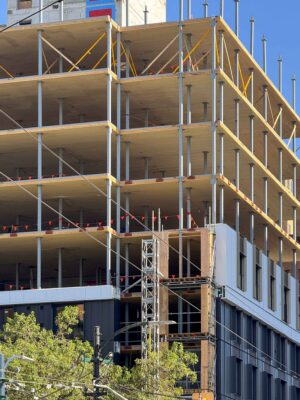 While sustainable solutions are facing drastic funding cuts, mass timber as a sustainable construction material is steadily gaining traction across the US. Construction using mass timber began in 2015 in the US, and since then the number of projects has grown about 20% annually. Today, over 2,500 mass timber projects are built or in progress in the US, including corporate offices for companies such as Google, Microsoft and Under Armour. …“We have lots of tech firms and big companies that say, ‘Hey, we’re battling it out for workers. We want the best space possible,’” said Bill Parsons, COO at WoodWorks. …Legislation that promotes and programs that fund mass timber, such as the Mass Timber Federal Buildings Act and the Wood Innovations Grant Program from the USDA, are still progressing. …Studies have shown that living or working in a mass timber building improves occupants’ mental health and well-being, even lowering their blood pressure and heart rates.
While sustainable solutions are facing drastic funding cuts, mass timber as a sustainable construction material is steadily gaining traction across the US. Construction using mass timber began in 2015 in the US, and since then the number of projects has grown about 20% annually. Today, over 2,500 mass timber projects are built or in progress in the US, including corporate offices for companies such as Google, Microsoft and Under Armour. …“We have lots of tech firms and big companies that say, ‘Hey, we’re battling it out for workers. We want the best space possible,’” said Bill Parsons, COO at WoodWorks. …Legislation that promotes and programs that fund mass timber, such as the Mass Timber Federal Buildings Act and the Wood Innovations Grant Program from the USDA, are still progressing. …Studies have shown that living or working in a mass timber building improves occupants’ mental health and well-being, even lowering their blood pressure and heart rates.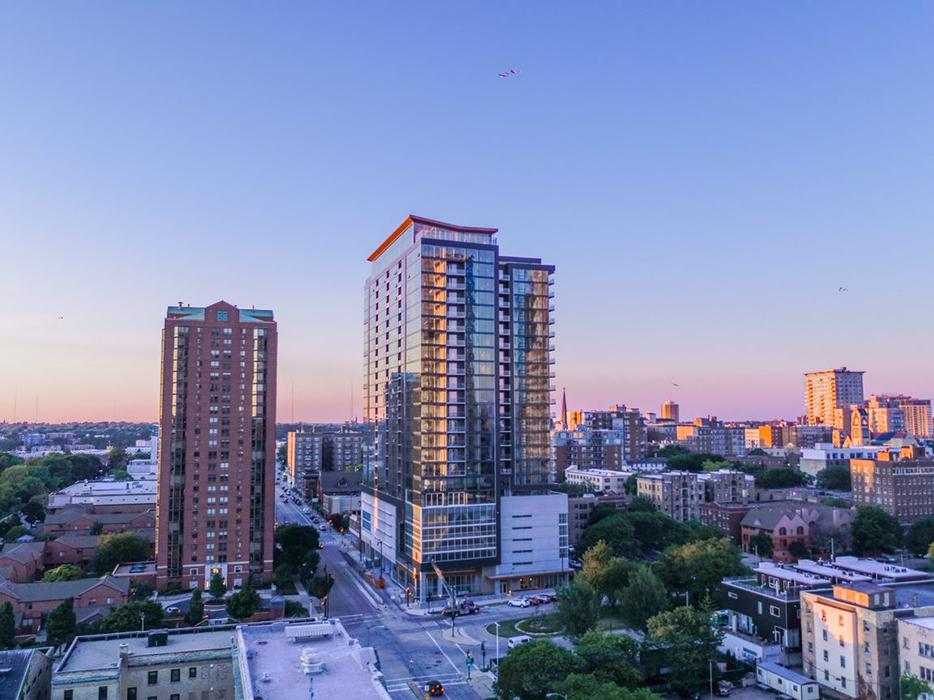




 Wildfire is part of the natural lifecycle of a forest; but as Manitoba continues to battle the embers of its most devastating fire season in more than 30 years, its leaders are starting to consider a more active role in managing this critical resource to stave off the flames. In early October, as more than 70 wildland fires still smouldered across the province, Premier Wab Kinew and a handful of cabinet ministers released Manitoba’s first all-encompassing plan to slash carbon emissions in the next 25 years. Among the promised initiatives was a
Wildfire is part of the natural lifecycle of a forest; but as Manitoba continues to battle the embers of its most devastating fire season in more than 30 years, its leaders are starting to consider a more active role in managing this critical resource to stave off the flames. In early October, as more than 70 wildland fires still smouldered across the province, Premier Wab Kinew and a handful of cabinet ministers released Manitoba’s first all-encompassing plan to slash carbon emissions in the next 25 years. Among the promised initiatives was a 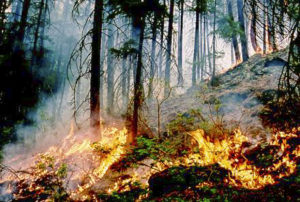 KAMLOOPS, BC — The impacts of climate change on wildland fires, cultural burning practices and inter-government cooperation are areas of research and interest among experts gathered by the newly-formed Wildfire Resilience Consortium of Canada. The national consortium was announced in July and received $11.7 million in funding over four years from Natural Resources Canada through the Wildfire Resilient Futures Initiative. Delegates from across Canada met for the first time on Thompson Rivers University’s campus last week for a three-day conference, which aimed to facilitate discussion, networking, and to pool knowledge. Rapid-fire presentations saw recipients of NRCan’s Building and Mobilize Foundational Wildland Fire Knowledge program speak about their projects and research studies. …Many of the presenters spoke of the increasing severity of wildfires, highlighting recent record-breaking fire seasons. University of Northern B.C. professor Che Elkin said climate change is having an impact on forest ecosystems, affecting individual tree growth and mortality.
KAMLOOPS, BC — The impacts of climate change on wildland fires, cultural burning practices and inter-government cooperation are areas of research and interest among experts gathered by the newly-formed Wildfire Resilience Consortium of Canada. The national consortium was announced in July and received $11.7 million in funding over four years from Natural Resources Canada through the Wildfire Resilient Futures Initiative. Delegates from across Canada met for the first time on Thompson Rivers University’s campus last week for a three-day conference, which aimed to facilitate discussion, networking, and to pool knowledge. Rapid-fire presentations saw recipients of NRCan’s Building and Mobilize Foundational Wildland Fire Knowledge program speak about their projects and research studies. …Many of the presenters spoke of the increasing severity of wildfires, highlighting recent record-breaking fire seasons. University of Northern B.C. professor Che Elkin said climate change is having an impact on forest ecosystems, affecting individual tree growth and mortality.

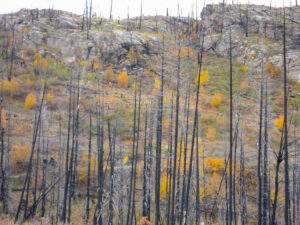
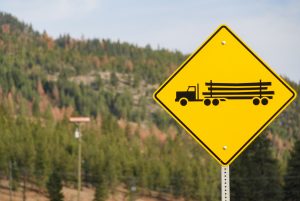

 Europe’s sawn timber industry is grappling with growing strategic uncertainty and rising compliance costs while the EU prepares to delay implementation of its landmark anti-deforestation law for a second time. While the postponement of the regulation to December 2026 may offer temporary relief, it also threatens to erode market incentives for early adopters and undermine confidence in the bloc’s regulatory direction. Producers across the continent have already invested billions of euros to meet the regulation’s demanding traceability requirements—developing digital platforms, upgrading Enterprise Resource Planning (ERP) systems, and restructuring supply chains to prove that every cubic meter of wood originates from deforestation-free sources. …In a strongly worded letter to the EC’s Environment Commissioner Jessika Roswall, a
Europe’s sawn timber industry is grappling with growing strategic uncertainty and rising compliance costs while the EU prepares to delay implementation of its landmark anti-deforestation law for a second time. While the postponement of the regulation to December 2026 may offer temporary relief, it also threatens to erode market incentives for early adopters and undermine confidence in the bloc’s regulatory direction. Producers across the continent have already invested billions of euros to meet the regulation’s demanding traceability requirements—developing digital platforms, upgrading Enterprise Resource Planning (ERP) systems, and restructuring supply chains to prove that every cubic meter of wood originates from deforestation-free sources. …In a strongly worded letter to the EC’s Environment Commissioner Jessika Roswall, a 